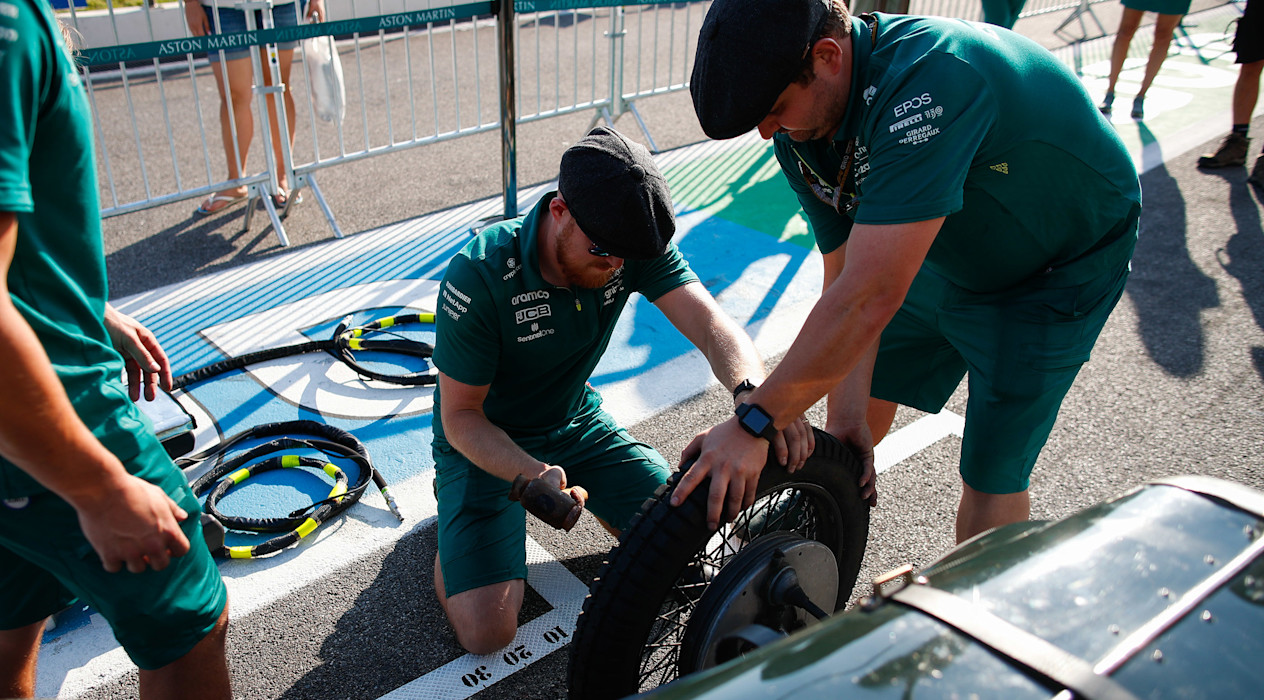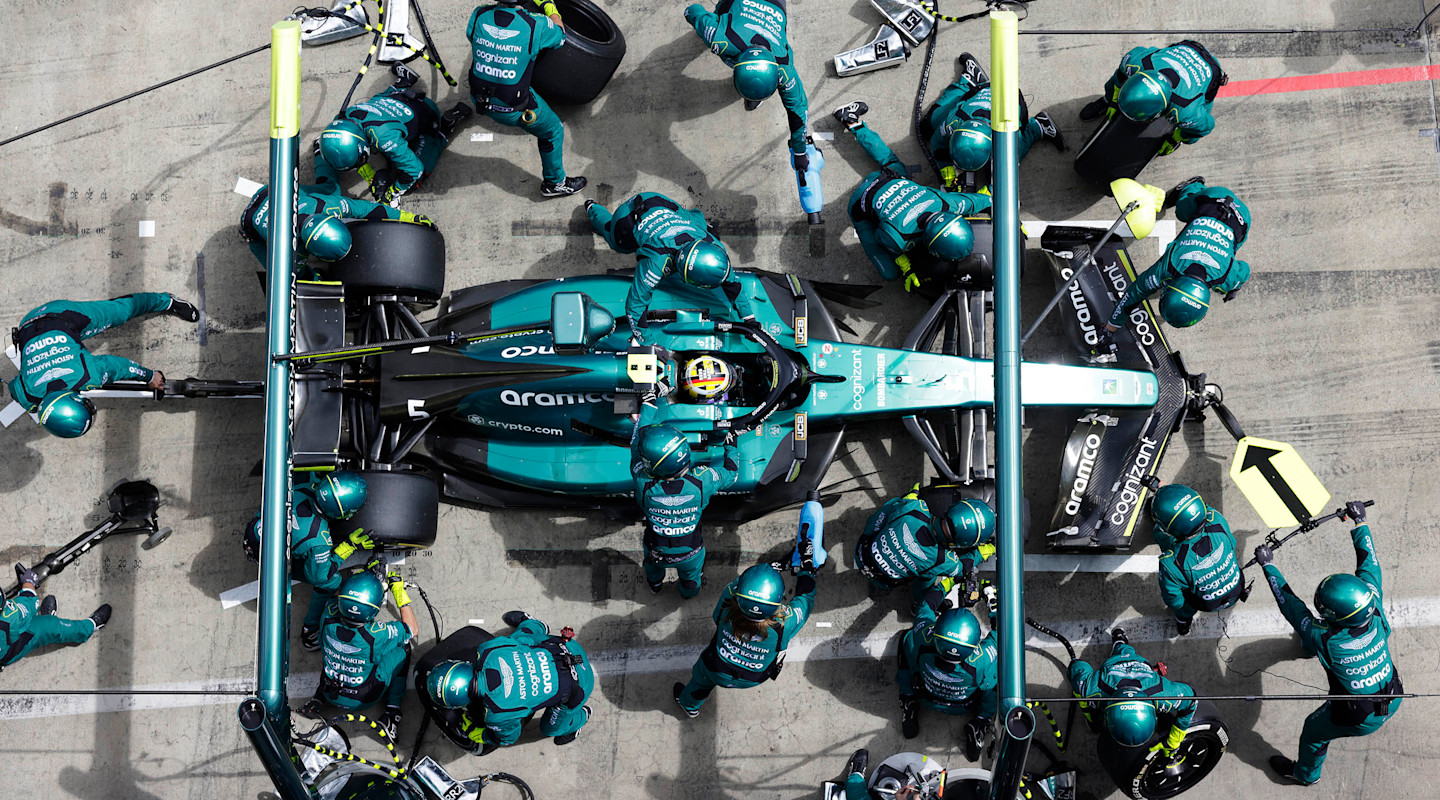
A century after Aston Martin's maiden Grand Prix, AMF1 mechanics took to the pitlane for pitstop practice with 'Green Pea' – our first Grand Prix car. We look back at how Aston Martin was already perfecting the art of the pitstop a hundred years ago.
This is how long it takes to perform a pitstop in Formula One.
In the time it took you to read that sentence, the car is lifted off the ground, all four tyres are removed, four new tyres are fitted, the front wing is adjusted, and the car is lowered back onto the ground for it to accelerate away.
In a sport where every second counts, sublime synchronisation in the pitlane can win you a position on track rather than lose one as about 20 mechanics work in perfect harmony to complete a swift stop. Precision is paramount. Nerves of steel a necessity.
It takes months of practice to hone this finely choreographed dance, but the pursuit of the perfect pitstop spans more than a century – and Aston Martin has been at the forefront.

When Aston Martin made its Grand Prix debut in 1922, a driver wasn't permitted to have a team of people to service the car.
Instead, the driver had to rely on a riding mechanic who rode with them during the race and was tasked with the maintenance of the car: from pumping oil and fuel to checking tyre wear and making repairs.
A pitstop took minutes rather than seconds. But that didn't stop Aston Martin from trying to achieve faster pitstops as part of attempts to break records and climb new heights.

Just weeks before its maiden Grand Prix at Strasbourg, Aston Martin broke 10 speed endurance world records with only the second car it ever built. Nicknamed 'Bunny', the car averaged 76mph over 16 hours and 30 minutes at Brooklands with Sammy Davis, Kensington Moir and Clive Gallop sharing driving duties.
As Aston Martin sought to keep average speed up, it focused on keeping pitstop time down. And, in his book titled Motor Racing, Davis recounts pitstop practice under the watchful eye – and instruction – of co-founder Lionel Martin as the team prepared for the world record attempt.
'We decided that the thing should be done thoroughly. Evening after evening Lionel Martin supervised depot drill, the car being pushed to an imaginary depot where each mechanic went through his allotted job.
'Time after time we found that if A emptied the sump oil, B was unable to get on with his job. It almost meant teaching people to lie on a marked spot.

'Then, when we came to deal with the steel-spoked wheels, which were attached by a ring of nuts, we found it was quicker for a man to undo those nuts and let them drop, picking up new ones from a box by his side, than to scrabble about for the old nuts on the track.
'Every single chassis nut was split-pinned, in fact the whole car was examined almost with a lens, to make sure everything was right.
'At Brooklands our depot was installed at a point on the home banking, a white line was painted on the track as a mark on which the front wheels were to be stopped so as to bring the car in exactly to the right place for the various jobs.
'Four wheels were laid out ready for a change, with the jacks, braces and boxes of wheel nuts at each wheel. It was laid down strictly that only Lionel Martin was to give orders, as an undisciplined clamour, however irresistible to the individual, is quite unintelligible to the driver or mechanic addressed.'
As the nature of pitstops evolved, the learnings and techniques from record attempts just like Aston Martin's in 1922, filtered through to Grand Prix racing and other forms of motorsport. Today, Formula One pitstops take only a matter of seconds, but they've been more than 100 years in the making.
Access I / AM to get closer to the team.
































